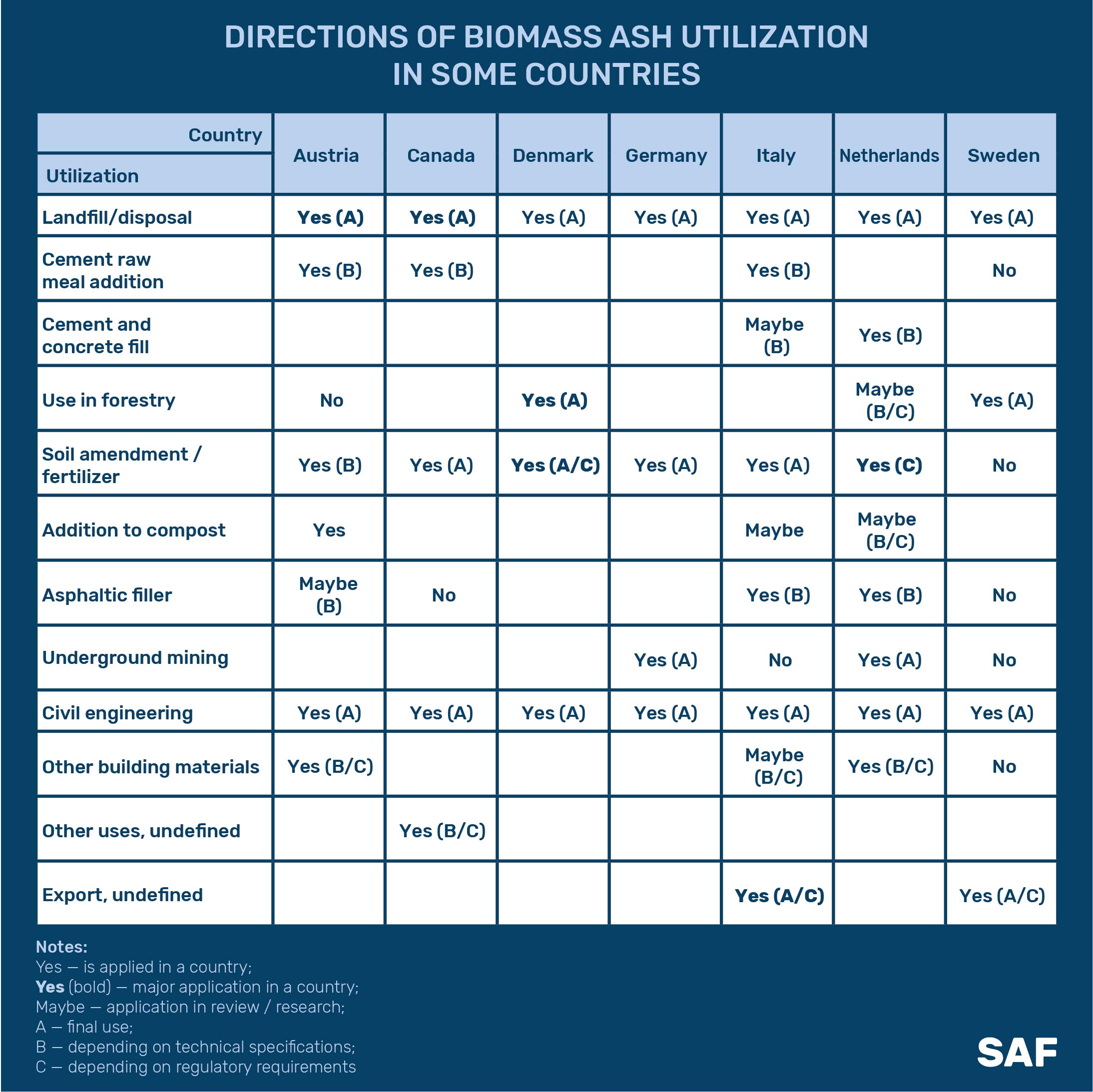
Fly ash
The main problem of ash management from biomass boilers in Ukraine is the lack of practices for its useful application. As a result, most of it from industrial and municipal boilers falls on landfills, increasing the anthropogenic load on the environment. To date, this problem has not become critical, because, according to our estimates, the volume of generated ash (about 132 thousand tons in 2019) is ten times smaller than waste from coal generation. However, if Ukraine’s plans of implementing RES and increasing energy use of biomass are implemented, the amount of biomass ash will increase almost 10 times by 2050. Therefore, we must look for ways to use it today.
From the point of view of the sustainability of biomass use, it is important to return the nutrients contained in the ash to the range of their natural circulation for absorption by other plants. Parts or elements that cannot be used in agriculture or forestry for one reason or another should be usefully disposed of in other industries. This is in line with the principles of the circular economy and the European Green Course, one of the tasks of which is to minimize waste generation by creating closed production chains, where waste and residues from some industries become raw materials for others.
The main areas of application of ash from biomass combustion in different countries are agriculture and forestry (use as fertilizer) and the construction industry (as an impurity to increase the magnesium content, a substitute for sand). For more information, you could read the table.

Biomass ash in Ukraine is traditionally considered a local fertilizer that has to be used where it was formed. However, most of it is formed in the industry and thermal energy sector, therefore the chain of the natural cycle of the matter is broken. The expansion of ash usage as a fertilizer is complicated by the need for state registration of all drugs used in agriculture, according to a rather complex and lengthy (at least 3 years) procedure. In case of non-confirmation of the biological effectiveness of the new drug, compared to the existing ones, it can be withdrawn from further tests. Thus, in contrast to a number of European countries, where the use of ash is regulated by law in agriculture and forestry, in Ukraine, it competes with mineral fertilizers. Ash also cannot be used in the construction industry, as the relevant standards provide for the use of only coal ash from thermal power plants as a component of cement mixtures, concrete, and paving materials.
To expand the effective utilization of biomass ash, we offer the following measures:
- Standardization of biomass ash as fertilizer. Determining the criteria of quality and origin of ash and separating the ash that can not be used as fertilizer.
- Inclusion of standardized ash in the “List of agrochemicals permitted for import into the customs territory of Ukraine, production, trade, use, and advertising without state registration”.
- Determining the most rational methods of utilization of ash that does not meet the requirements of its use in agriculture in other industries.
- Finding the possibility of using ash from different types of biomass in the organic production sector.
- Research and development of technologies to improve consumer qualities and conduct field studies of the effectiveness of biomass ash as fertilizer. Development of different types of fertilizers based on biomass ash for different types of soil/crops and recommendations for their use.
- Raising awareness among potential consumer groups about the possibilities and technologies of using biomass ash as a fertilizer with proven effectiveness. Popularization of successful experience of agricultural producers both in Ukraine and other countries.
- Further harmonization of Ukraine’s law with the EU on fertilizer production and their application.